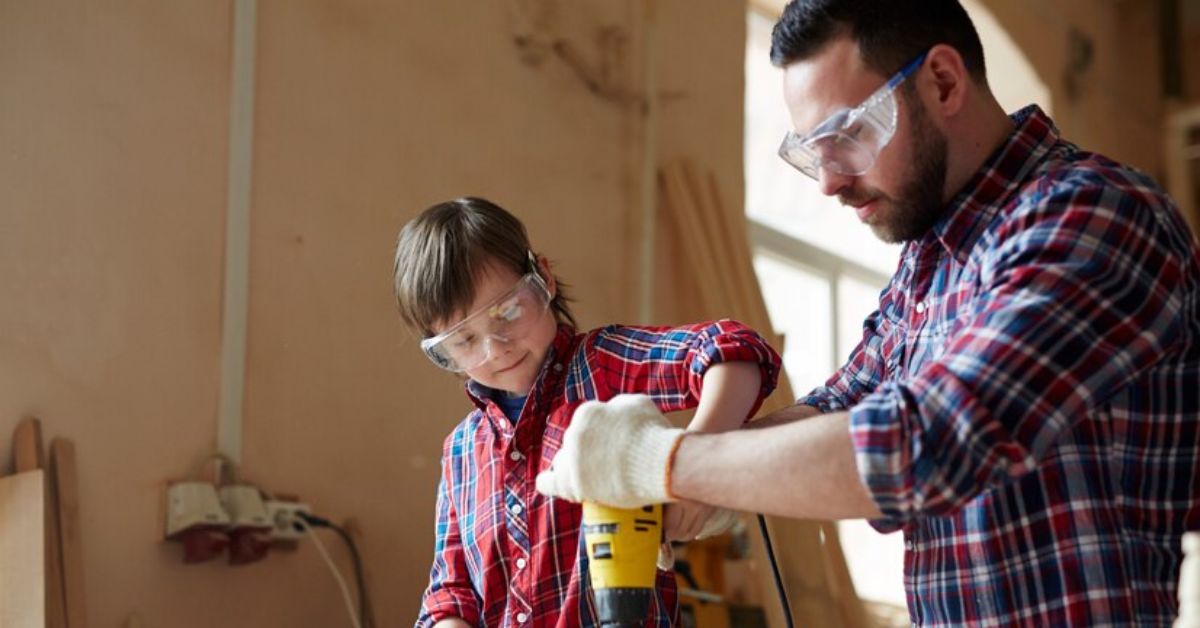Topic
Who is an Empathetic Male Writer? A Comprehensive Guide

In a world where words can heal or hurt, an empathetic male writer stands out as a beacon of understanding and connection. But what exactly does it mean to be an empathetic writer, particularly for men? Let’s dive into this topic, exploring the essence of empathy in writing and what makes an empathetic male writer truly exceptional.
Understanding Empathy in Writing
What is Empathy?
Empathy involves the ability to understand and share the feelings of another person. In the context of writing, this means not only recognizing the emotional state of your characters but also connecting deeply with your readers’ experiences and emotions.
Why Empathy Matters in Writing
Empathy in writing allows for a richer, more nuanced storytelling experience. It helps create characters and narratives that resonate with readers on a personal level, fostering a deeper connection and engagement with the story.
The Role of Empathy for Male Writers
Challenging Stereotypes
Historically, male writers have often been stereotyped as emotionally detached or less in touch with their feelings. An empathetic male writer challenges these stereotypes by demonstrating that sensitivity and emotional depth are not gender-specific traits.
Empathy and Emotional Intelligence
For male writers, empathy is a form of emotional intelligence that enhances their ability to craft characters who are complex and relatable. This emotional intelligence enables them to explore diverse perspectives and experiences, enriching their narratives.
Traits of an Empathetic Male Writer
Deep Listening
An empathetic male writer practices active listening, paying close attention to the emotions and experiences of others. This skill helps them accurately portray different viewpoints and create authentic, multi-dimensional characters.
Vulnerability
Being open about one’s own vulnerabilities is another hallmark of empathy. An empathetic male writer is willing to expose their own emotional truths, which in turn allows them to write more genuine and heartfelt stories.
Compassion and Understanding
Compassion drives an empathetic writer to explore and present the struggles and triumphs of their characters with sensitivity. They approach storytelling with an understanding that goes beyond surface-level observations.
How Empathetic Male Writers Approach Their Craft
Research and Observation
Empathetic writers often engage in extensive research and observation to truly grasp the experiences they write about. This involves immersing themselves in different environments and actively seeking to understand the diverse lives of others.
Dialogue and Character Development
In character development, empathetic male writers focus on crafting dialogue that feels real and meaningful. They ensure their characters’ voices reflect their individual experiences and emotional states accurately.
Reflective Practice
Empathetic male writers frequently engage in reflective practice, examining their own biases and assumptions. This self-awareness helps them create more nuanced and empathetic portrayals of their characters.
Challenges Faced by Empathetic Male Writers
Overcoming Emotional Barriers
Male writers may face societal pressures that discourage them from expressing vulnerability. Overcoming these barriers is crucial for them to fully embrace empathy in their writing.
Balancing Objectivity and Subjectivity
Striking a balance between being empathetic and maintaining objectivity can be challenging. Empathetic male writers must navigate this balance to ensure their stories are both emotionally engaging and narratively cohesive.
Examples of Empathetic Male Writers
Famous Empathetic Male Writers
Several male writers are renowned for their empathetic storytelling. Authors like Khaled Hosseini, who wrote “The Kite Runner,” and Mitch Albom, known for “Tuesdays with Morrie,” exemplify how empathy can drive powerful narratives.
Contemporary Voices
In addition to these well-known authors, many contemporary male writers continue to push the boundaries of empathetic writing. Their work often reflects a deep understanding of diverse human experiences and emotions.
Developing Empathy as a Writer
Practice Active Empathy
Writers can develop empathy by actively engaging with the experiences of others. This might involve reading widely, participating in diverse communities, and seeking out stories from different perspectives.
Seek Feedback
Constructive feedback from readers and fellow writers can provide valuable insights into how well one’s writing resonates with others. This feedback is crucial for refining empathetic writing skills.
Continual Learning
Empathy is a skill that evolves with experience and learning. Empathetic male writers should embrace opportunities for growth and education, continually striving to enhance their understanding of human emotions and experiences.
The Impact of Empathetic Writing
On Readers
Empathetic writing has the power to move readers deeply, often leading to a greater sense of connection and understanding. It can inspire, comfort, and challenge readers, making the reading experience more impactful.
On Society
At a broader level, empathetic writing can foster greater empathy and compassion in society. By portraying diverse experiences with sensitivity and depth, writers contribute to a more understanding and inclusive world.
Conclusion
An empathetic male writer embodies a deep understanding of human emotions and experiences. By challenging stereotypes, embracing vulnerability, and engaging in reflective practice, these writers create stories that resonate on a profound level. Their ability to connect with readers through empathy not only enriches their own writing but also contributes to a more compassionate and inclusive literary landscape.
FAQs
- How can male writers develop their empathy?
- Male writers can develop empathy by immersing themselves in diverse experiences, actively listening to others, and engaging in reflective practices.
- What are some common challenges faced by empathetic male writers?
- Common challenges include overcoming societal expectations, balancing emotional engagement with narrative objectivity, and addressing personal biases.
- Can empathy in writing benefit readers?
- Yes, empathy in writing can significantly benefit readers by creating a deeper emotional connection, providing comfort, and broadening their understanding of different perspectives.
- Are there famous male writers known for their empathetic storytelling?
- Yes, authors like Khaled Hosseini and Mitch Albom are well-known for their empathetic storytelling, which vividly portrays human experiences and emotions.
- How can feedback help in developing empathetic writing skills?
- Feedback provides insights into how well a writer’s work resonates with readers, allowing them to refine their empathetic approach and enhance the emotional impact of their writing.
Topic
Debt Consolidation with Zero Debt

Debt Consolidation: A Financial Strategy for a Stress-Free Future
Debt can often feel like a heavy burden, especially when juggling multiple payments, interest rates, and due dates. For many Latino families, finding a way to regain control over their financial future is essential.
Debt consolidation offers a practical strategy to manage and simplify your debts, paving the way to financial stability.
The Growing Debt Crisis
Debt can creep into your financial life in various ways—high-interest credit cards, medical bills, personal loans, and more. While these financial tools can help during emergencies or major life events, they often create stress when balances become difficult to manage.
For Latino families, balancing multiple financial responsibilities while managing cultural or familial obligations can be particularly challenging.
Beyond the financial strain, debt also impacts mental health, causing anxiety, stress, and even strained personal relationships. Recognizing the signs of financial overload early can help you regain control before it’s too late.
What Is Debt Consolidation?
At its core, debt consolidation combines multiple debts into one single payment—often with a lower interest rate.
This is typically done through a consolidation loan or program, which pays off your existing debts. Instead of managing numerous accounts and payments, you streamline your finances into one fixed monthly amount.
Debt consolidation won’t erase your debt, but it can make payments easier to manage and help you avoid missed deadlines or extra fees. For many in the Latino community, it’s a powerful step toward financial stability, lowering stress, and building a stronger future for your family.
Key Benefits of Debt Consolidation
Debt consolidation offers several advantages beyond simplifying your payment schedule. Here’s how it can positively impact your financial situation:
1. Lower Interest Rates
Consolidation loans usually offer much lower interest rates compared to credit cards or payday loans. This means you save money in the long run—money that could be used for your family or other important goals—and get out of debt faster.
2. One Monthly Payment
Keeping track of multiple bills is stressful. With debt consolidation, you’ll have just one easy monthly payment, helping you stay organized and avoid missing deadlines. Managing your finances becomes simpler and more manageable.
3. More Room in Your Budget
Lower interest rates or longer repayment terms can reduce your monthly payments, freeing up extra cash for essentials like groceries, emergencies, or even sending money to family back home.
4. Build a Stronger Credit Profile
By paying off high-interest debts and staying consistent with your consolidated loan, you can boost your credit score over time. This opens doors to better financial opportunities, like buying a home or starting a business.
5. Less Stress, More Focus
Debt isn’t just financial—it impacts your peace of mind. Consolidating your debt can help relieve that emotional burden, giving you and your family the chance to focus on brighter priorities, like building a better future.
Who Should Consider Debt Consolidation?
Debt consolidation isn’t a one-size-fits-all solution, but it’s especially beneficial if you find yourself in any of these situations:
- Struggling to keep track of multiple debt payments.
- Paying high interest rates that are keeping you from reducing the principal balance of your debt.
- Feeling overwhelmed or anxious about the amount of debt you owe.
- Experiencing financial difficulty but still maintaining a steady income.
If your financial obligations align with any of these scenarios, it may be time to explore debt consolidation as a solution to your challenges.
How Zero Debt Can Help
For Spanish-speaking individuals and Latino families across the U.S., companies like Cero Deuda specialize in providing debt relief services tailored to your needs.
Why Choose Zero Debt?
Cero Deuda is trusted by Hispanic families to help achieve financial freedom while maintaining a culturally empathetic approach. Their personalized service makes the process more accessible and less intimidating for Spanish-speaking clients.
Here’s how their programs work:
- Free Financial Consultation – Cero Deuda’s Spanish-speaking debt specialists assess your financial situation and identify potential savings with zero obligation, making it easy for Latino communities to get started. This Hispanic debt relief service is designed to provide personalized assistance and ensure that you fully understand your options before making any decisions.
- Personalized Debt Resolution Plan – After your consultation, Cero Deuda crafts a customized plan tailored to your lifestyle and budget, all in Spanish to ensure clear and effective communication.
- Creditor Negotiation – Their experts negotiate directly with your creditors, often in as little as 12-48 months, working to reduce your debt while keeping the needs of the Latino community in mind.
- Guidance and Support – Cero Deuda provides ongoing support in Spanish, empowering you with financial tips and resources on your journey to becoming debt-free.
Cero Deuda focuses on unsecured debt like credit cards and loans, and they’re committed to providing culturally respectful, professional services in Spanish. Many satisfied clients share positive Cero Deuda reviews, highlighting their dedication to helping the Hispanic community achieve financial freedom with tailored solutions and a personal touch.
Success Story
“After struggling for years to rebuild our finances post-pandemic, we discovered Cero Deuda. Thanks to their support, we’ve reduced our monthly payments and, for the first time in years, feel hopeful about our future!” – Carmen R.
Is Debt Consolidation Right for You?
If you’re unsure whether debt consolidation is your best option, here are a few questions to ask yourself:
- Do you owe more than $7,500 in unsecured debt?
- Are you struggling to afford the minimum payments on your credit cards or other loans?
- Do you have a steady income but still feel buried under financial obligations?
If you answered “yes” to any of these questions, debt consolidation might be the right step toward financial freedom.
Take the First Step Toward a Stress-Free Future
Managing debt doesn’t have to be a solitary or overwhelming process. With support from experts like Cero Deuda, you can simplify your finances, reduce your stress, and regain control of your financial future.
Are you ready to take the first step? Learn more about their debt consolidation solutions and book a free consultation today.
Remember, every step toward financial freedom—no matter how small—is a significant step toward a brighter, stress-free future.
Topic
Harnessing the Power of Laravel Pipelines

Laravel provides an elegant way to manage complex workflows and processes in an application. Through its built-in features, developers can streamline tasks, making code more maintainable and efficient. One of the most powerful tools in this ecosystem is the Laravel pipeline, a flexible method to manage operations sequentially. Below, we will explore how Laravel pipelines can simplify complex tasks and improve the structure of your code.
Streamlining Application Logic with Laravel Pipelines
Laravel pipelines offer a straightforward approach to handling a series of tasks. Instead of relying on complex conditional statements, the pipeline allows you to chain operations, each performing a discrete action. This improves the readability and maintainability of your codebase, making it easier for developers to debug or modify workflows.
Chaining operations isolates specific parts of your logic, enabling a modular design. With each task encapsulated within its pipeline step, you ensure that future changes to any part of the process don’t require extensive rewrites. This reduces technical debt, allowing developers to focus on other application areas without worrying about breaking existing functionality.
The flexibility of Laravel pipelines also makes them ideal for managing dependencies between tasks. Each step can conditionally pass data along, allowing the next operation to use previously generated information. This seamless flow between tasks ensures a smooth transition from one operation to the next, eliminating unnecessary complexity.
Finally, Laravel pipelines support multiple configurations, making them adaptable to various business logic requirements. Whether you’re building a customer service tool or an e-commerce platform, Laravel pipelines help you stay organized and reduce the likelihood of errors. This approach results in faster development cycles and more reliable software.
Simplifying Complex Processes Using Laravel Pipelines
When handling complex processes, breaking them down into manageable steps is crucial. Laravel pipelines allow you to do this effortlessly by structuring operations in a clear sequence. This decomposition ensures that each individual process focuses on one aspect of the overall workflow, making it easier to troubleshoot and refine as needed.
In scenarios where tasks are interdependent, pipelines provide a natural data flow. By sending the output of one operation directly to the next, you ensure that each step gets the necessary information to continue. This eliminates the need for manual data handling and reduces the potential for errors when passing variables between functions.
Moreover, Laravel pipelines work well for handling actions that require multiple conditions. You can chain operations and let each one decide whether to continue, apply specific logic, or skip over certain steps. This adaptive capability simplifies managing workflows where conditions vary based on external inputs or configuration settings.
Pipelines are also useful in scenarios that require repeated task execution, such as processing large datasets or filtering items. Structuring each action as part of a pipeline allows you to reuse code without repeating the same logic. This approach ensures consistency and optimizes performance by reducing the overhead of redundant operations.
Best Practices for Implementing Laravel Pipelines in Your Project
The key to successfully implementing Laravel pipelines is ensuring that each step is focused and concise. Avoid bundling multiple tasks into a single step, as this can reduce clarity and hinder maintainability. By adhering to the principle of single responsibility, each operation in the pipeline becomes more predictable and easier to test.
One best practice is to keep the pipeline flexible enough to adapt to changes. Design your pipelines to be extensible, allowing additional tasks to be easily added or removed. This flexibility ensures you can scale the pipeline without disrupting its flow or introducing bugs into existing functionality as your application evolves.
It’s important to optimize your pipeline’s performance. While Laravel pipelines are generally efficient, complex or unnecessary steps can introduce performance bottlenecks. Always consider the cost of each operation and focus on minimizing redundant tasks, especially when dealing with large volumes of data or intricate workflows.
Lastly, ensure thorough testing of each pipeline step to guarantee that the overall process functions as intended. Laravel provides excellent testing tools, which you can leverage to validate each operation in isolation. This approach helps detect errors early in development and ensures the pipeline operates smoothly across various scenarios.
Altogether, Laravel pipelines offer a powerful solution for managing complex workflows with simplicity and flexibility, enabling developers to build more efficient and maintainable applications. By implementing best practices, optimizing performance, and ensuring thorough testing, developers can significantly enhance the scalability and reliability of their projects over time.
CLICK HERE FOR MORE BLOG POSTS
Topic
The Top Power Tools Every DIY Enthusiast Should Own

For DIY enthusiasts, having the right tools can transform a hobby into a passion, enabling precise work and professional-quality results on home projects. Among the essentials for any DIY toolkit are power tools, particularly those offered by Powerhousexpress in Pakistan.
In this article, we focus on the indispensable corded power tools that every DIYer should own to tackle a wide range of tasks efficiently and safely.
Essential Corded Power Tools for DIY Projects
- Corded Drill: The cornerstone of any power tool collection, a corded drills offers unmatched reliability and power for drilling through various materials, including wood, metal, and masonry. Powerhousexpress models are known for their durability and robust performance, ensuring that even the toughest drilling jobs are completed with ease.
- Circular Saw: For cutting through wood or other materials with precision and speed, a circular saw is indispensable. It’s ideal for making straight cuts and is a must-have for tasks like trimming doors, cutting shelving, or even tackling larger projects like building a deck.
- Jigsaw: When it comes to making intricate cuts in wood or metal, a jigsaw is your go-to tool. Perfect for cutting curves and complex shapes, it’s essential for tasks such as cutting out sink holes in countertops or crafting custom pieces of furniture.
- Orbital Sander: Achieving a smooth finish on wood projects is effortless with an orbital sander. It’s much faster and more effective than sanding by hand, and it’s ideal for preparing surfaces for painting or staining.
- Reciprocating Saw: Known for its versatility, a reciprocating saw is crucial for demolition projects or for cutting through tough materials like piping, fiberglass, and even tile. Its push-and-pull motion allows for aggressive cutting actions that other saws cannot achieve.
- Bench Grinder: For sharpening tools, grinding down metal parts, or even smoothing rough edges, a bench grinder is a valuable addition to your workshop. It’s also useful for shaping metal and cleaning objects before welding or fitting.
The Advantages of Corded Tools
While cordless tools offer convenience and portability, corded tools win in terms of uninterrupted power and performance. They are generally more powerful and do not require batteries, making them ideal for prolonged use on larger projects where stopping to recharge can disrupt workflow. Additionally, corded tools tend to be more cost-effective over the long term, as they do not require battery replacements.
Powerhousexpress Commitment to Quality
Powerhousexpress in Pakistan ensures that DIY enthusiasts have access to high-quality, reliable corded power tools that can handle a variety of tasks. Their products are engineered to meet the needs of both novice and experienced DIYers, providing performance, safety, and durability.
Tips for Choosing and Using Corded Power Tools
When selecting power tools, consider the specific needs of your projects, the tool’s power requirements, and its ergonomic design to ensure comfortable and safe usage. Always follow the manufacturer’s guidelines for use and safety, and wear appropriate protective gear, such as safety goggles and gloves.
Conclusion
Equipping yourself with the right corded power tools can make a significant difference in the quality and enjoyment of your DIY projects. With tools from Powerhousexpress, DIY enthusiasts in Pakistan can trust that they are using some of the best equipment on the market. Whether you’re a beginner or a seasoned pro, these tools will help you achieve your creative visions with precision and efficiency, making every project a success.

 Cartoon1 year ago
Cartoon1 year agoUnlocking the Potential of Nekopoi.care: A Comprehensive Guide

 Game1 year ago
Game1 year agoExploring Aopickleballthietke.com: Your Ultimate Pickleball Destination

 BUSINESS1 year ago
BUSINESS1 year agoWhat Companies Are In The Consumer Services Field

 BUSINESS11 months ago
BUSINESS11 months agoUnraveling the Mystery of 405 Howard Street San Francisco charge on Credit Card

 HOME IMPROVEMENT1 year ago
HOME IMPROVEMENT1 year agoVtrahe vs. Other Platforms: Which One Reigns Supreme?

 TECHNOLOGY11 months ago
TECHNOLOGY11 months agoThe Guide to Using Anon Vault for Secure Data Storage

 ENTERTAINMENT8 months ago
ENTERTAINMENT8 months agoUnderstanding Bunkr Album: A Comprehensive Guide

 ENTERTAINMENT1 year ago
ENTERTAINMENT1 year agoThe Epic Return: Revenge of the Iron-Blooded Sword Hound
















